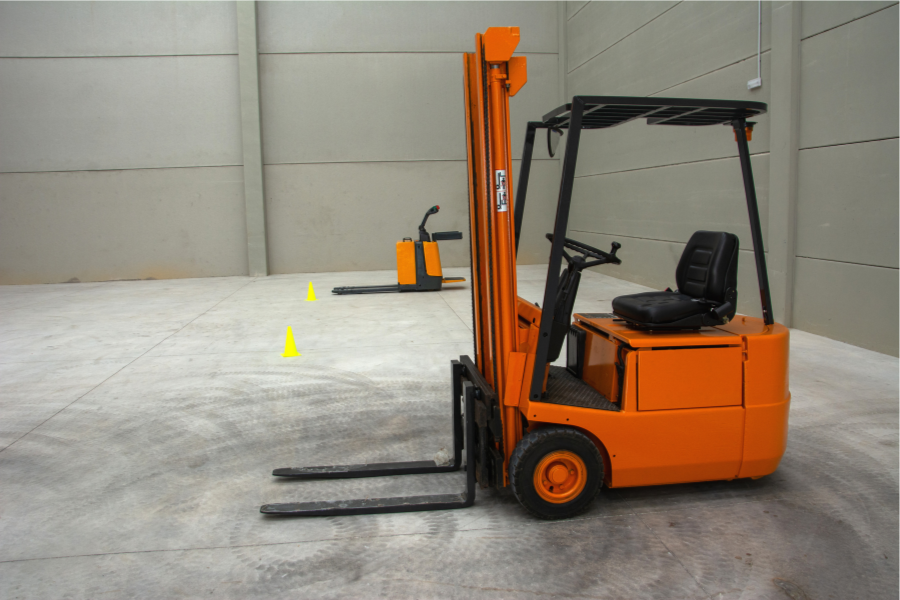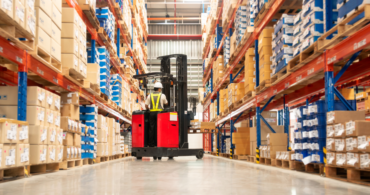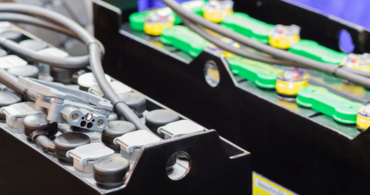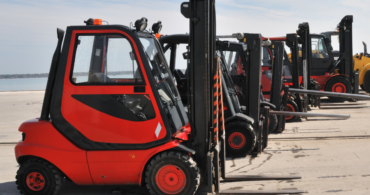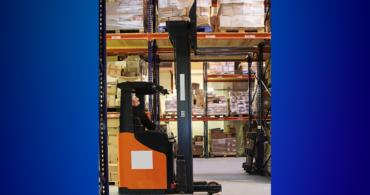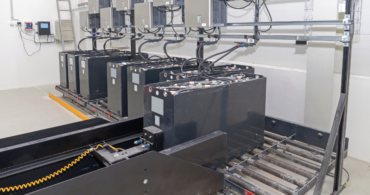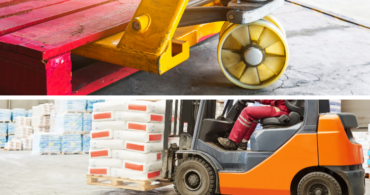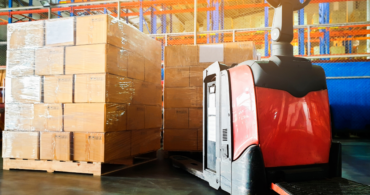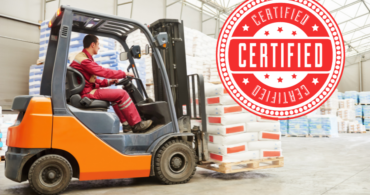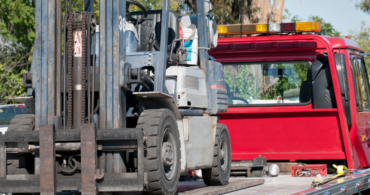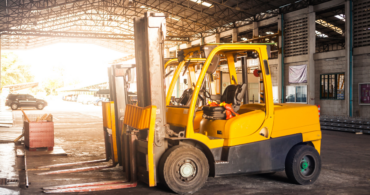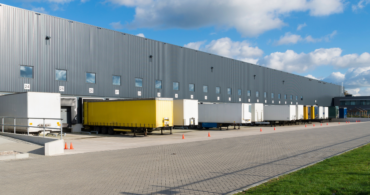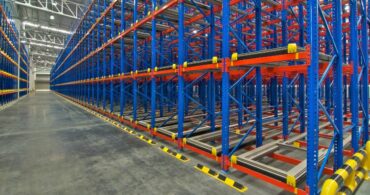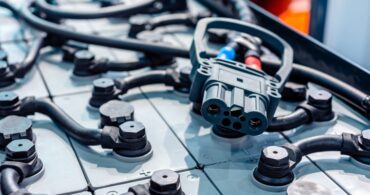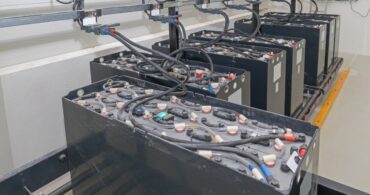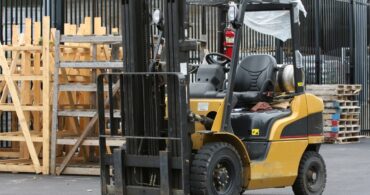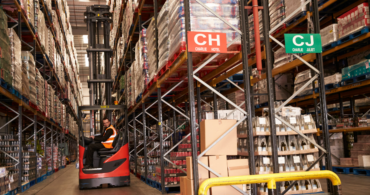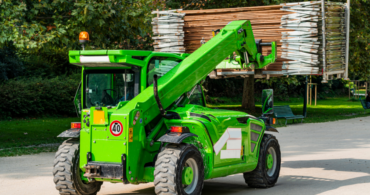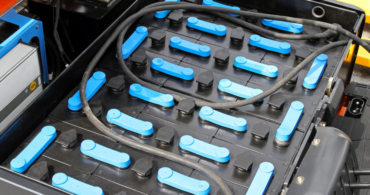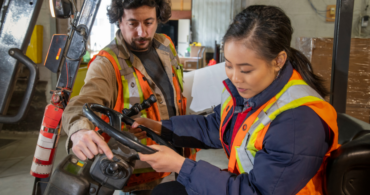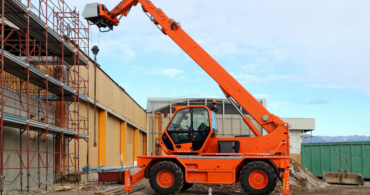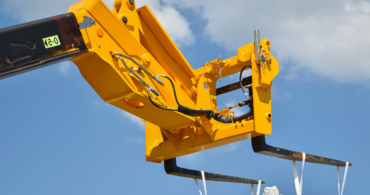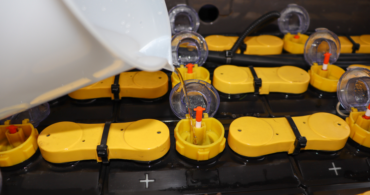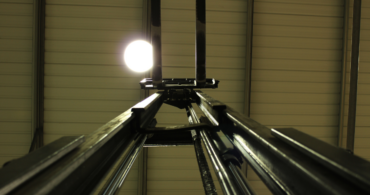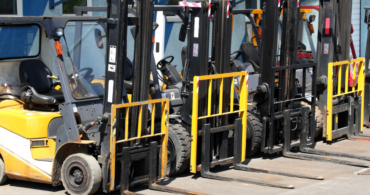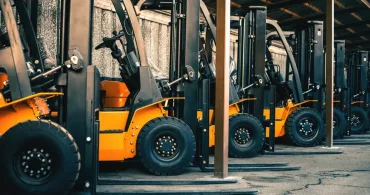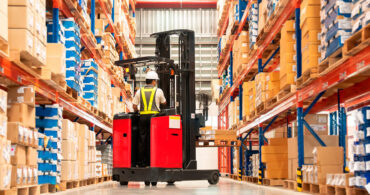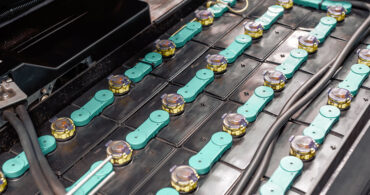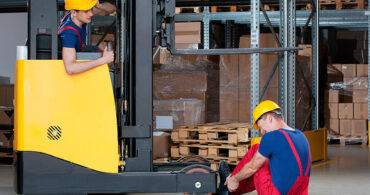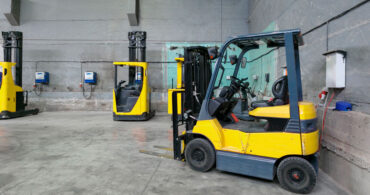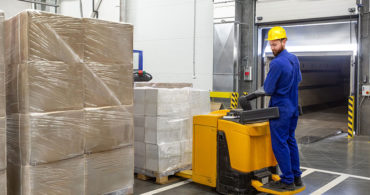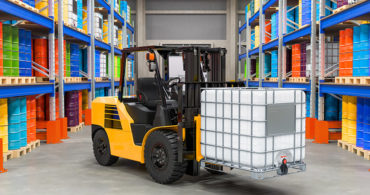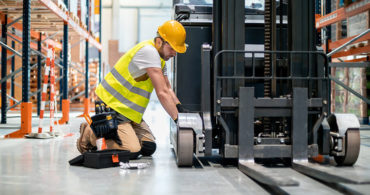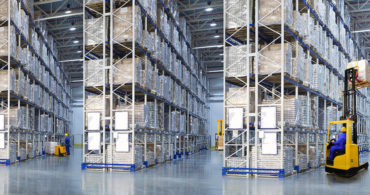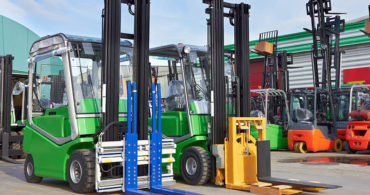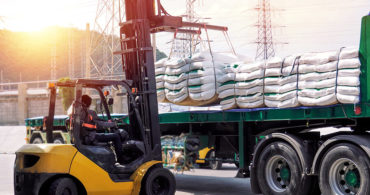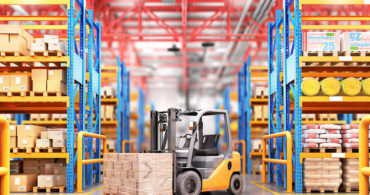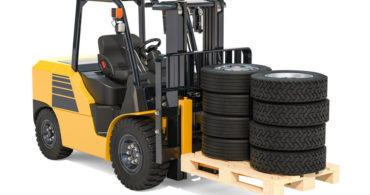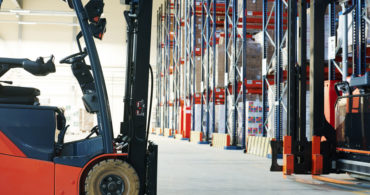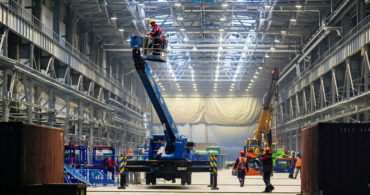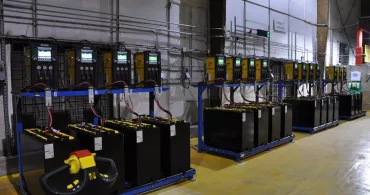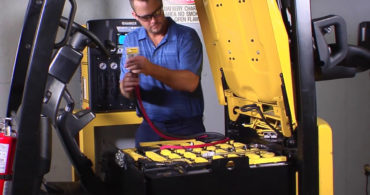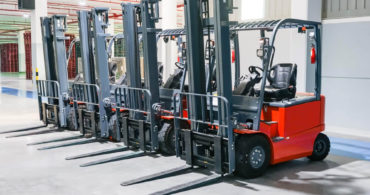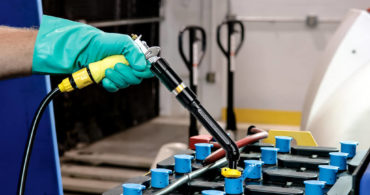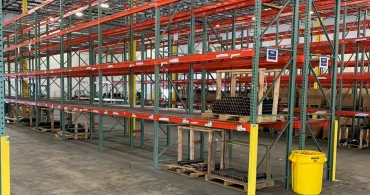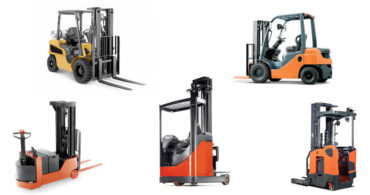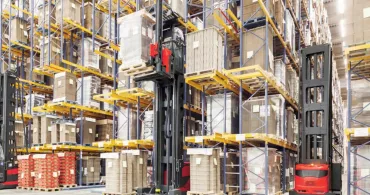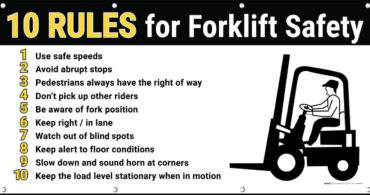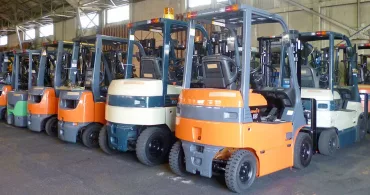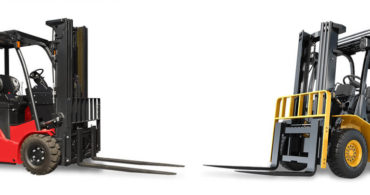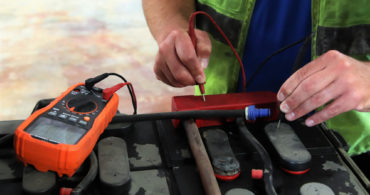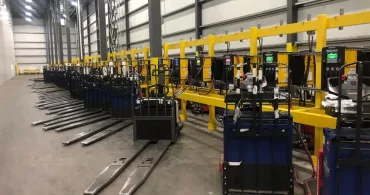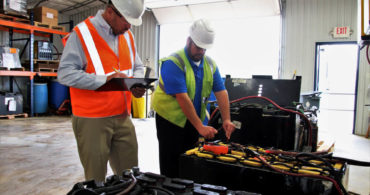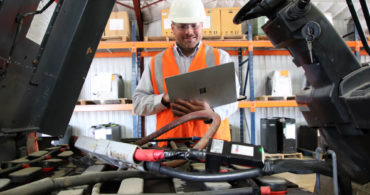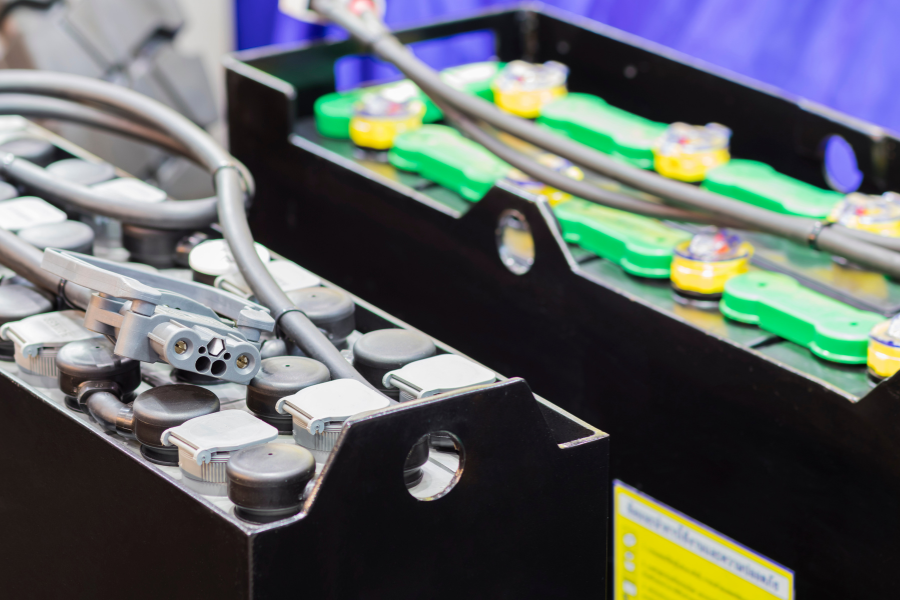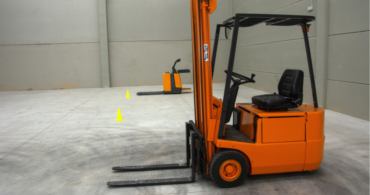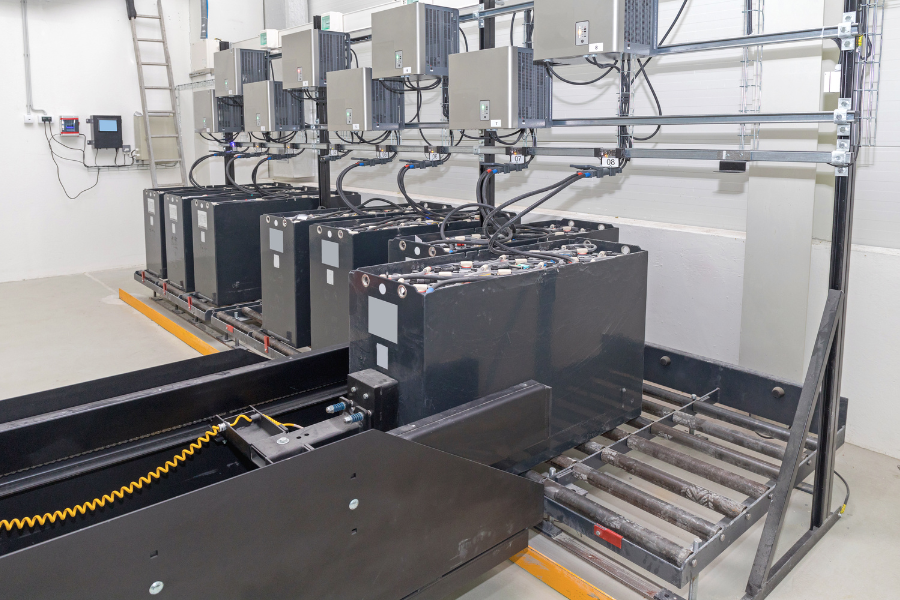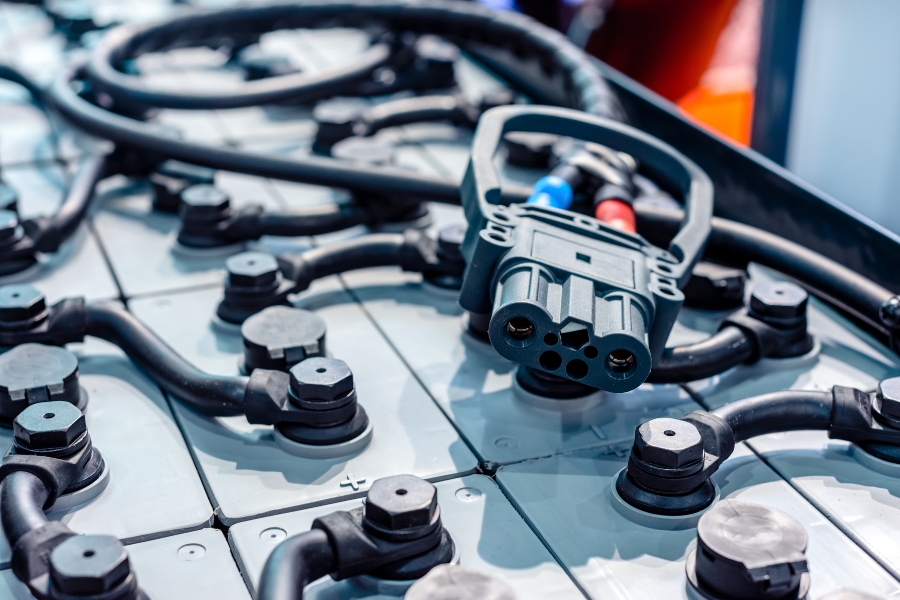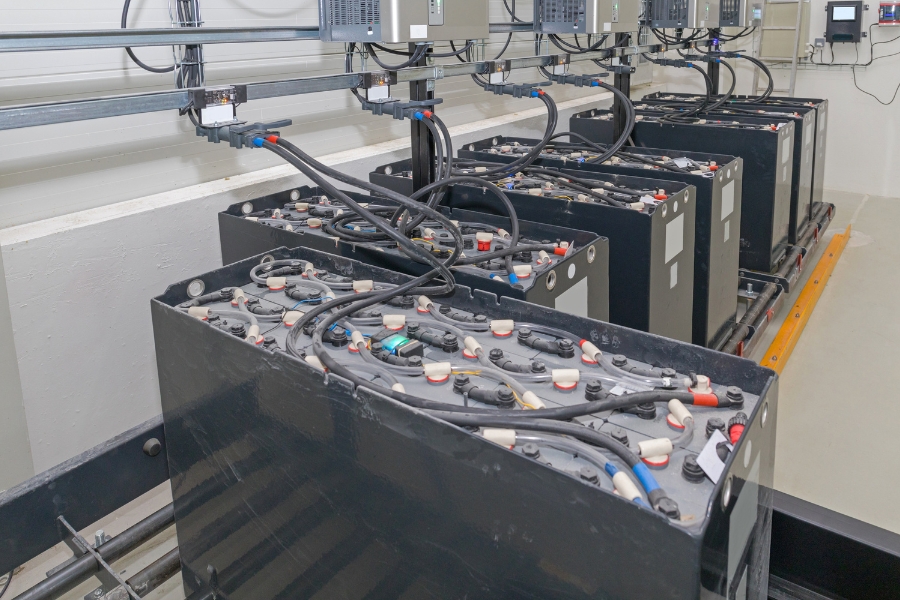In 2019, the Nobel Prize in Chemistry was awarded to three scientists for their work developing a “lightweight, rechargeable and powerful battery … now used in everything from mobile phones to laptops and electric vehicles.” Since you clicked on this article, you likely won’t be too surprised to discover it was the lithium ion battery
In the 1970s, Stanley Whittingham was working for Exxon as a chemist when he developed a new battery that could recharge in a short time frame. The experiment was halted by Exxon because his batteries, which used titanium disulfide and lithium metal as the electrodes, kept catching on fire.
Then, in the 1980s, John B. Goodenough, while working at the Inorganic Chemistry Laboratory at the University of Oxford, experimented on Whittingham’s design. He found that using lithium cobalt oxide as the cathode instead of titanium disulfide doubled the battery’s energy potential and somewhat reduced its bursting-into-flames potential. (Fun fact: Goodenough became an engineering professor at the University of Texas at Austin in 1986. He lived in Austin, TX until when he passed away at the age of 100 in 2023.)
Goodenough sold his idea to the Atomic Energy Research Establishment in the United Kingdom, which made millions licensing the patent to the Sony Corporation (Goodenough received nothing from that deal). At Sony, Akira Yoshino found that replacing some of the lithium metal with petroleum coke made the battery even safer and more stable.
How lithium ion batteries work
Due to the efforts of Whittingham, Goodenough and Yoshino, the first commercial lithium ion batteries (also known as li-ion or liion batteries) were released in 1991. However, lithium batteries for forklifts have only been available for over a decade.
There are four main components inside a lithium ion battery cell: an anode (positive) comprised of lithium nestled inside carbon graphite, a cathode (negative) made from cobalt, an absorbent glass mat separator and an electrolyte solution comprised of lithium salt dissolved in carbonate solvents. There are hundreds of these cells inside a battery.
Lithium is weird. It has an outermost electron that it can’t get rid of fast enough. So, when presented with an opportunity, like a circuit connecting the anode to the cathode, the lithium atoms in the anode pop out of their carbon cubby and toss away that electron like a mortarboard cap at a graduation ceremony. Those electrons then travel the circuit and provide power to anything from a smartphone to a forklift, while the lithium atoms, now lithium ions (get it?), lazily float across the electrolyte solution to the cathode.
Eventually, most of the lithium pops out of the anode, drifts away and the battery loses power. At this point, it is necessary to hook it up to a charger to reverse the processes and recharge the battery.
Why are lithium batteries better?
There is an easy answer to “Why are lithium batteries better?” They’re not. However, they’re also not worse than other forklift batteries.
The truth is that lithium ion batteries are the right solution for some businesses, while others may be better served by another option, such as the good old lead acid battery or a newer technology like a hydrogen fuel cell battery. Ultimately, it depends on how you utilize your forklift fleet. That is why Texas Motive Solutions provides a complimentary forklift fleet performance analysis that ensures your business is using the best batteries for your needs.
Let’s look at some of the strengths of a lithiuim ion forklift battery to discover how it might impact your business.
Lithium ion battery advantages
Efficiency
Lithium batteries for forklifts have a higher energy density than lead acid batteries. This means they typically have longer runtimes, and your forklifts have more time on the job. Additionally, a forklift lithium battery provides consistent power no matter where it is in its discharge cycle. This means the battery’s performance is the same at the start of a shift as it is at the end.
Fast charging
Unlike lead acid batteries, which require prolonged charging periods (usually eight hours with another eight hours of cooldown time), lithium ion batteries can be charged in a fraction of the time, typically about an hour. Known as “rapid charging,” this approach utilizes a high-frequency battery charger. No cooldown period is necessary.
Some lithium batteries operate best when they’re at the highest possible charge. These batteries utilize a technique known as “opportunity charging.” Opportunity charging allows a forklift operator to charge their forklift battery whenever convenient, such as during a lunch break. A good rule for opportunity charging is if the truck will sit longer than 15 minutes, plug it in. Again, a cooldown is not needed.
Some lithium battery charging tips, include:
- Use high-quality chargers. Better chargers utilize advanced charging algorithms that help to optimize the battery’s performance and longevity.
- Avoid overcharging. Some lithium ion batteries are sensitive to overcharging, which can reduce the battery’s lifespan. Some ideas that help avoid overcharging are to utilize smart charging systems (see above) and to set charging timers so the batteries avoid prolonged exposure to high voltage.
- Monitor charging temperature. The optimal charging temperatures for lithium battery maintenance are typically between 32°F to 113°F (0°C to 45°C). Charging a lithium ion battery in too high or too low temps or letting the battery’s temperature rise too high while charging can damage components inside the battery. This can lessen the battery’s ability to hold a charge and compromise its safety.
- Implement partial charging. If your business is using lithium ion batteries that benefit from partial charging cycles rather than almost full discharge and recharge cycles, make sure your operators utilize opportunity charging during breaks and any periods of inactivity.
Long lifespan
With proper care and maintenance, a lithium ion battery can last thousands of charge cycles without any noticeable drop in performance. A forklift lithium battery will last between 2,000 and 3,000 cycles, which is between seven and ten years.
In contrast, a properly maintained lead acid battery will last approximately 1,500 charge cycles, which is about five years. (Also, a lead acid battery can’t distinguish between half and full charges. So, every charge, even one from 80% to 100%, uses one of those 1,500 charges.)
Sustainable and environmental
Lithium ion batteries are an effective alternative to using fossil fuels for power. They are also recyclable (at specialized battery recyclers) and do not contain toxic substances, such as lead and sulfuric acid, which are present in lead acid batteries (it’s not like those batteries are trying to hide it, with that name).
However, lithium ion batteries do contain cobalt, graphite and lithium, which are considered “critical minerals” by the Environmental Protection Agency (EPA). According to the EPA, “Critical minerals are raw materials that are economically and strategically important to the U.S., have a high risk of their supply being disrupted and for which there are no easy substitutes.” Recycling lithium ion batteries helps to ensure that these valuable resources are reused and the environmental impact of mining for them is less.
Lithium ion battery maintenance
Regular inspections
At least every six months, keep an eye on your lithium ion batteries and look for any signs of damage or wear. Be sure to check for:
- Signs of physical impairment, such as cracks, bulges or leaks.
- Corrosion, tightness or signs of overheating at terminals and connections.
- Debris or contaminants around the outside of the battery.
Be sure to keep a log that details your findings, including observations, measurements and any repairs. By documenting your observations and actions, you can stay ahead of most liion battery maintenance issues.
Ventilation
Batteries need to “breathe” to prevent overheating. So, keep your lithium ion batteries clean and free from debris or contaminants that may obstruct airflow while the batteries are in use or charging.
Storing
When your lithium ion batteries are not in your trucks, they need to be kept in a cool, dry environment that’s well-ventilated and away from direct sunlight and extreme temperatures. Additionally, if you plan to store a lithium ion battery for a prolonged amount of time, it’s advisable to keep it at a partial charge level (slightly less than 50%) to preserve its health.
Lithium ion battery forklift
So, are lithium batteries for forklifts the best solution for you? Ultimately, the answer depends on how you utilize your fleet. Does your operation have multiple shifts that utilize the same forklifts? Then, lithium ion batteries may be the most cost-effective solution.
The most effective way to determine which batteries are best for you is to take advantage of our non-invasive Power Study. This complimentary service allows us to find out:
- What power requirements your operation really needs.
- How to improve operational efficiencies for optimal battery utilization.
- What type of forklift batteries and chargers would work best in your application.
- How to best optimize the performance of your forklift fleet to prolong battery life and ensure warranty coverage.
Because the Power Study data is so precise, we can create a solution tailored to your needs, which means you won’t waste money on batteries and chargers you don’t need. We use HAWKER® HawkerNet™ cloud-based battery management technology to analyze real-time battery performance. This tool is easy to use and non-invasive. Your forklift drivers won’t even know it’s there.
Our goal is to get the right equipment into your facility. When your power requirements change or equipment ages, we’re happy to come in and perform another Power Study at no cost to you.
To learn more about our complimentary forklift fleet performance analysis and for all your forklift repair, battery and accessory needs, please call us at (888) 316-2459 or fill out this form to learn about our services and discover everything that Texas Motive Solutions can do for you.
